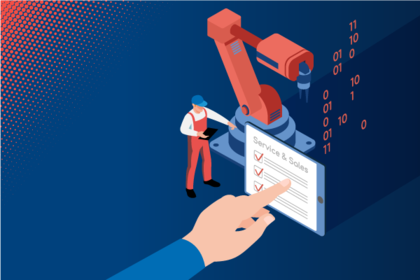E-mobility - Part 1: Challenge for fleet management
The transportation sector is electrified: Because climate targets are becoming stricter, the topic of e-mobility is gaining momentum. In our series of articles on e-mobility, we shed light on what the trend means for companies with vehicle fleets and for municipalities with vehicle fleets.

The hunger for energy in road transport is great. That's why the German government is putting the transport sector on a particularly strict diet: in 2020, vehicles emitted 146 million tons of CO2, but by 2030, transport emissions are to be no more than 85 million tons of CO2. Alternative forms of propulsion are expected to help achieve this ambitious target.
While the switch from the familiar internal combustion engine to a modern electric vehicle is often a question of faith for consumers, completely different considerations play a role for companies and, above all, local authorities.
Status quo: electromobility in Germany
The advantages of e-mobility are obvious: Electricity in the battery is cleaner than fossil fuels in the tank. In addition, electric driving means: less noise and lower emissions.
At the same time, vehicles with electric drives can store energy. In times of fluctuating wind and solar power, and with appropriate management, they could fulfill a buffering function as decentralized energy storage systems.
3 Facts about electromobility in Germany
- more than 70 vehicle models are already available in Germany with purely electric drives. The number of electric commercial vehicles is also growing.
- 13.6 percent of newly registered passenger cars are already electric. Commercial vehicles are also catching up: in 2013, the number was 2,389; six years later, the figure was already 17,611. In the same period, the number of buses, tractors and special-purpose vehicles doubled from 575 to 1,204.
- Globally, Germany ranked 3rd in terms of e-mobility in 2021.
How companies and municipalities contribute to the mobility revolution
Switching to electromobility makes a valuable contribution to environmental protection. Companies, municipal utilities or mobility service providers that operate a fleet of vehicles can also enhance their image. By saying yes to e-mobility, they are demonstrating that sustainability plays an important role in their values.
However, companies and municipalities that want to electrify their vehicle fleets face a number of challenges in doing so: For example, operating an e-fleet requires efficient fleet management. This is the only way to ensure that no vehicle runs out of power and that maintenance is carried out in a timely manner.
Typically, the following tasks fall under fleet management:
- Ensuring the safe, economical and smooth operation of the fleet
- Procurement, depreciation and maintenance of vehicles
- Monitoring of costs
- Control of driving licenses
- Management of leasing contracts
- Planning of routes and driver assignments
- Communication with technicians or insurance companies
- Monitoring drivers' rest periods in logistics operations
Employees who assume the role of vehicle manager in companies therefore need a comprehensive view of the condition and use of the vehicle fleet. They are also in close contact with drivers, insurance companies, technicians, car manufacturers and various departments in their company, such as accounting and management.
Their knowledge is indispensable for the electrification of the fleet. That's because the following considerations, among others, are relevant:
- How many vehicles are needed in principle?
- How have the vehicles been used so far - are long-distance journeys more common or do city trips predominate?
- What is the charging infrastructure like on typical routes?
- What charging solutions are needed on the company premises?
- How is the vehicle fleet managed today and what software solutions will be needed in the future to efficiently implement range and charging management, for example?
Switching to electric vehicles in the fleet requires good planning and some changes. Processes have to be rethought and adapted, and the existing fleet users have to rethink and accept the change. However, with thorough preparation and the involvement of all stakeholders, the best solution for converting the vehicle fleet to electric mobility can be found for every company.
Prerequisite for the operation of electrified vehicle fleets
The most important thing for a smoothly running e-fleet is maintenance. For companies that want to integrate electric cars into their fleet or switch to e-mobility altogether, maintenance is usually not a problem. They can sign maintenance contracts and thus have one less thing to worry about.
But what is the situation like, for example, for a city cleaning service that has special vehicles in use? Part 2 of this series of articles provides the answers. There is already a foretaste: software for interactive spare parts catalogs plays an important role in the smooth maintenance of municipal vehicles.




